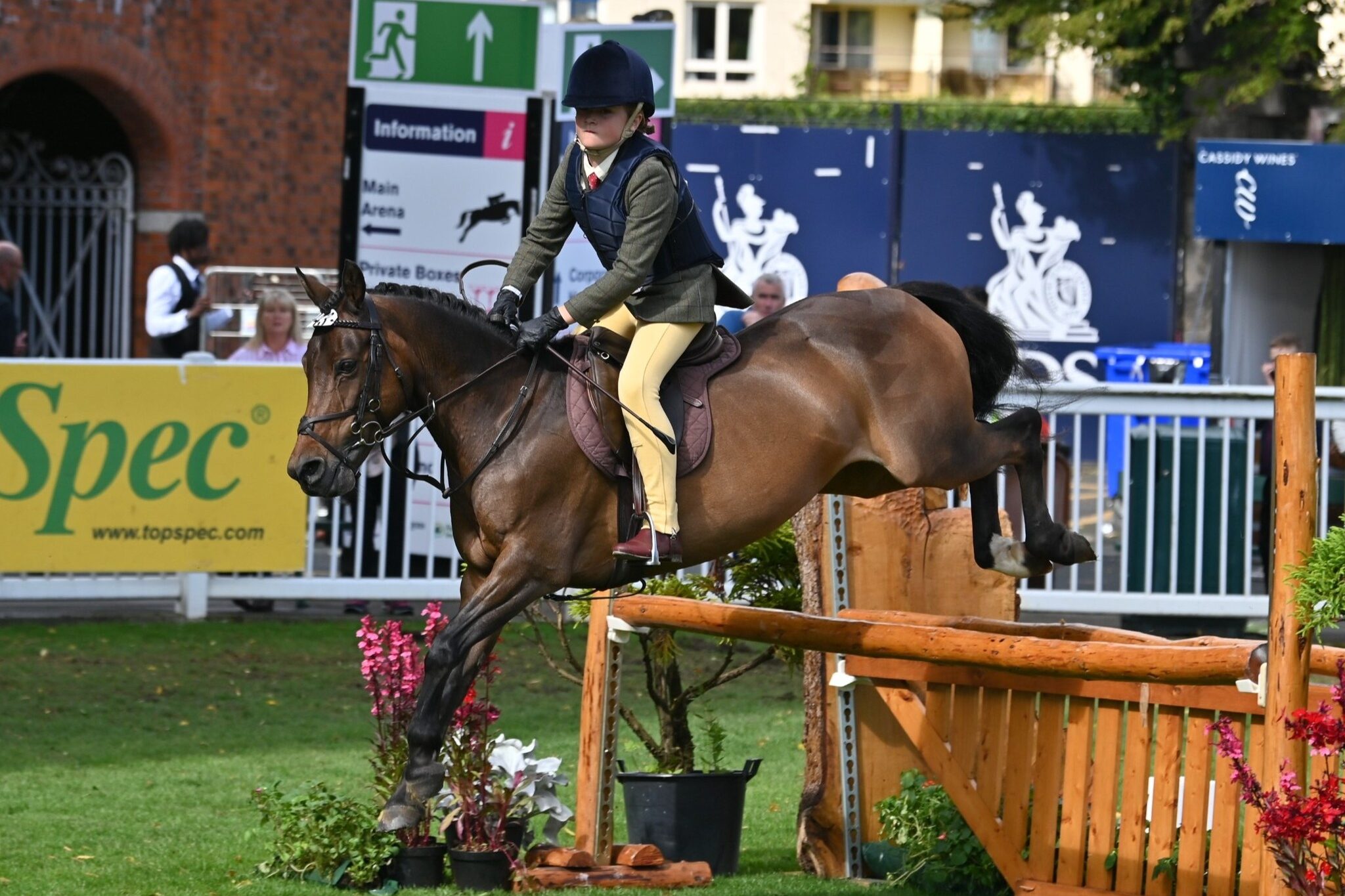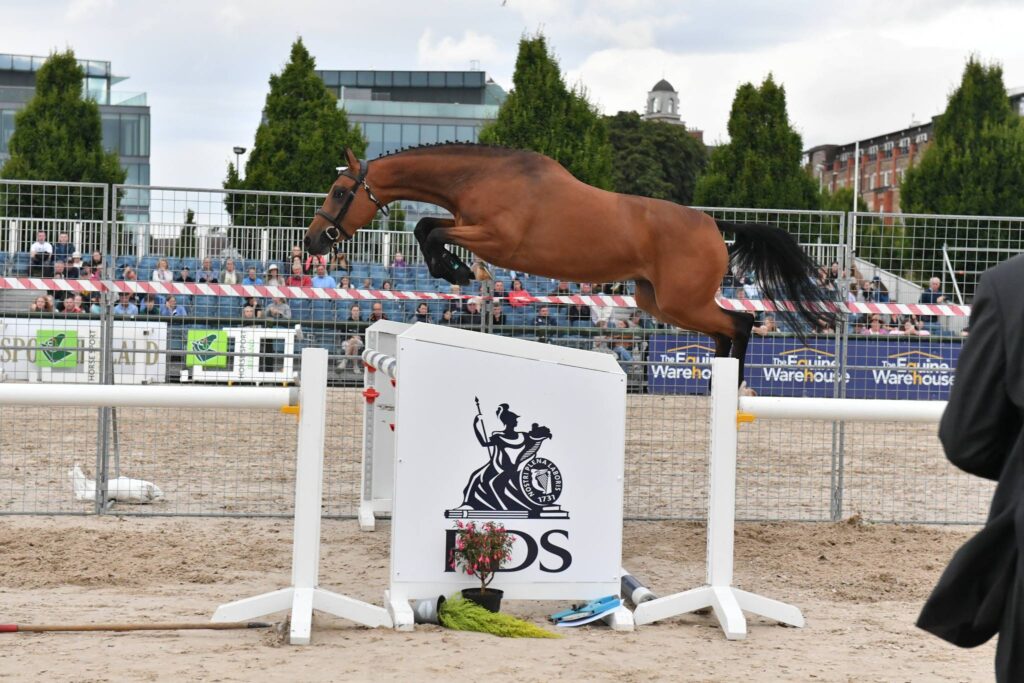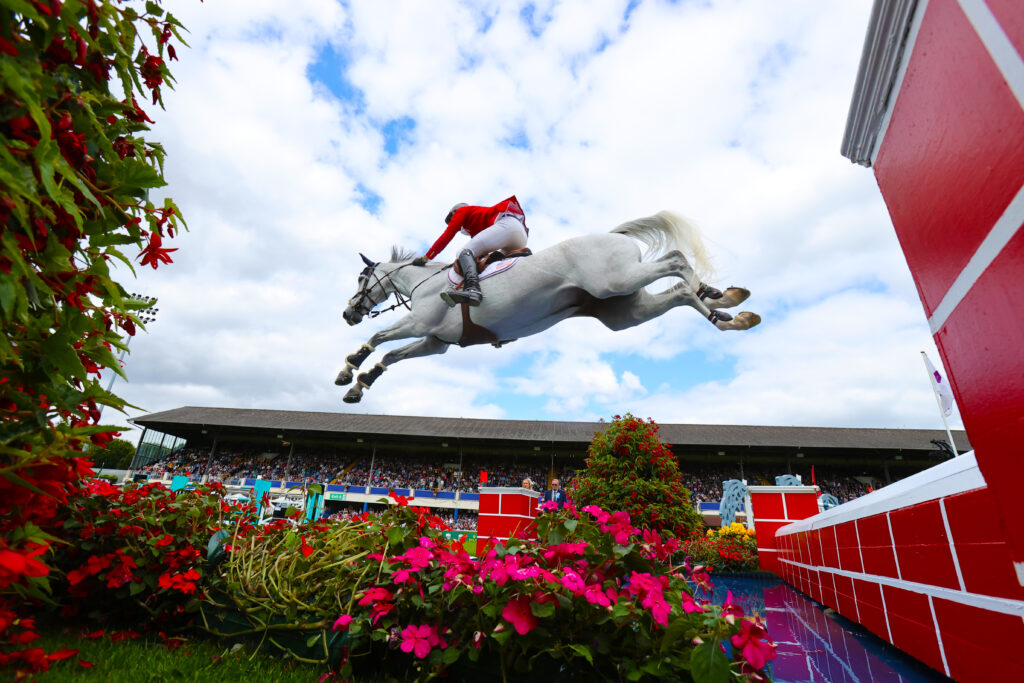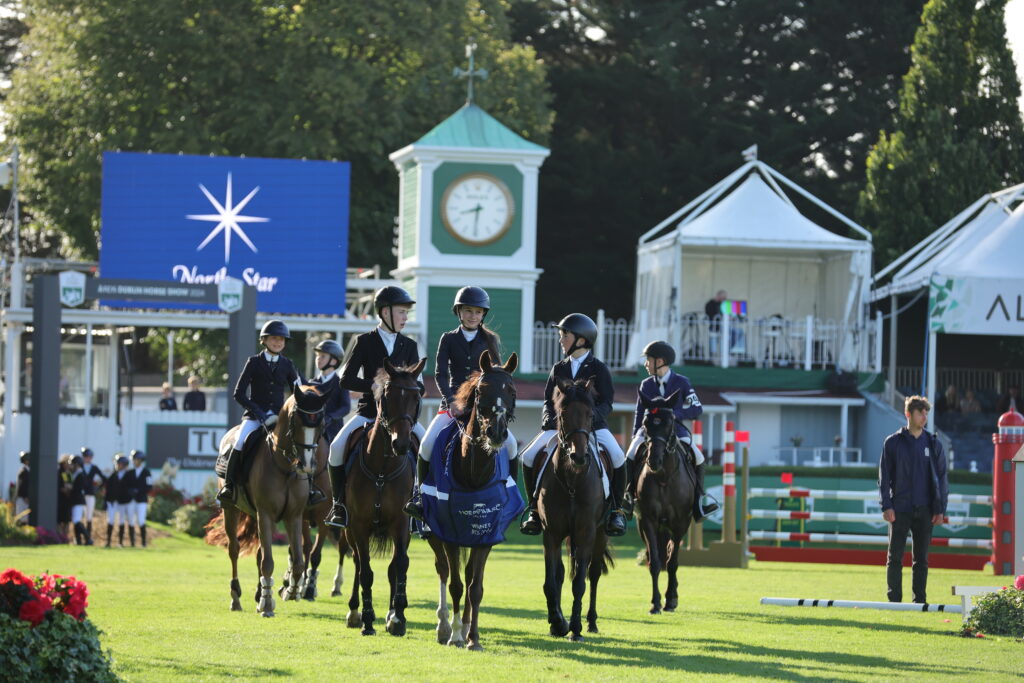
Every summer, the Dublin Horse Show brings together the best of Irish and international equestrian sport. Many visitors are drawn to the elite-level show jumping in the Main Arena, with its Olympic-level competitors, thunderous rounds, and standing ovations.
But there’s another world unfolding just a short walk away, in Ring 1 and Ring 2, that holds just as much history and prestige; the world of showing.
If you’ve ever wandered past a ring and seen immaculate horses trotting in formation while judges look on quietly, this guide is for you.
What Is Showing?
In the simplest terms, showing is a judged event where horses and ponies are evaluated on:
• their conformation (build and balance),
• movement,
• manners and behaviour, and
• overall presentation (how well they’re groomed, turned out, and ridden or led).
Each horse is shown either in-hand (led by a handler on foot) or ridden. The aim is to demonstrate how well each animal meets the ideal standards for its type or breed, whether that’s a strong working hunter, a graceful side-saddle mare, or a future top foal.
Think of it as the equine equivalent of a dog show, with a deep focus on tradition, structure, and form.
Where It All Happens
• Ring 1 and Ring 2 (near the old site of the Anglesea Stand) are where the majority of showing classes take place. These are grassy outdoor arenas with calm atmospheres and an emphasis on precision.
• The Main Arena and Simmonscourt Arena are reserved for international and national show jumping competitions.
Main Types of Showing Classes
Here’s a breakdown of the most common types of showing classes you’ll see in Ring 1 and 2:
1. Ridden Hunter Classes
These classes assess horses under saddle that might traditionally be used for fox hunting.
They’re judged on their movement, obedience, presence, and manners. The judge may even ride the horse themselves as part of the assessment.
What to look for: Strong, athletic horses with quiet temperaments and a smooth, balanced canter.
2. Working Hunter Classes
A combination of showing and jumping, these classes involve a small course of natural-style fences, followed by flatwork.
What to look for: Calm, rhythmical jumping followed by composed, obedient movement on the flat.
3. In-Hand Breeding Classes
These classes show off the future of Irish breeding, with foals, young stock, mares, and stallions led on foot. Judges look for good bone, strong backs, straight legs, and a promising stride.
These classes are a window into tomorrow’s champions and future stars of sport and stud.
4. Irish Draught Classes
A showcase of Ireland’s national horse breed, known for strength, kindness, and versatility.
Classes are both in-hand and ridden, and highly regarded among breeders and traditional horsemen.
Look for: Solid, correct movement and strong frames with kind expressions.
5. Connemara Pony Classes
Connemaras are another iconic Irish breed, intelligent, athletic ponies that excel in many disciplines. These classes include:
• In-hand and ridden ponies,
• Working hunter pony classes,
• Stallion and mare evaluations.
Ideal for spotting top ponies for junior riders or future sport careers.
6. Side Saddle & Turnout Classes
Side saddle riding is a rare and elegant tradition where women ride “aside” rather than astride. Riders wear long habits and use specific tack.
Turnout classes, especially for children and ponies, focus on neatness, grooming, and overall appearance.
These classes are visually stunning and showcase pride in presentation.
How to Watch Showing Like a Pro
Here’s how to better enjoy and understand the experience, even if it’s your first time:
• Check the programme or Equipe app to understand what class is in the ring. It will say if it’s a hunter, in-hand, or working class.
• Look for the numbers: Each horse wears a number. Follow their performance from first trot to final line-up.
• Choose a favourite: Watching with intention helps you see what judges might be looking for; balance, straightness, obedience.
• Stay for the final line-up: Horses are ranked and awarded rosettes after evaeryone has been judged. It’s the moment of truth.
Public Judging Competition
Want to test your eye? The Dublin Horse Show offers a Public Judging Competition where visitors can predict the order of finish in a selected class. If your guess matches (or comes closest to) the official judging results, you could win a prize.
Details and entry forms are usually available via QR codes displayed around the grounds or included in the show programme.
Winning at Dublin means prestige, and many horses here go on to top national and international careers in showing, breeding, or jumping.

A Note on International Events
Though this article focuses on showing, don’t miss the international jumping in the Main Arena and Simmonscourt:
• The Nations Cup of Ireland – a team jumping event (won by USA in 2024)
• The Defender Puissance – a crowd favourite, jumping a wall over 2 metres high
• The Rolex Grand Prix of Dublin – part of the prestigious new Rolex Series
• 2024 Winner: Martin Fuchs (Switzerland) with Leone Jei
• Prize fund: Over €500,000
RTÉ covers these major events on national television throughout the week.

Visitor Tips
• Nearest DART station: Sandymount – about a 10-minute walk to the entrance
• Sunscreen and patience – showing classes can be long and relaxed, but worth the wait
• Ask a steward – they’re friendly and often happy to explain what’s going on
Final Thought
It’s easy to be drawn to the speed and thrill of jumping, but showing is where Irish horse tradition lives and breathes. It’s a world of quiet mastery, pride in breeding, and a deep connection between horse, rider, and heritage.
So next time you’re wandering through the grounds, stop by Ring 1 or 2, watch a few laps, and maybe even take a shot at the Public Judging Competition. You might just find yourself hooked.
For more general information on the show, make sure to read our article Anticipating Excellence: What to Expect at the Upcoming 150th RDS Dublin Horse Show


